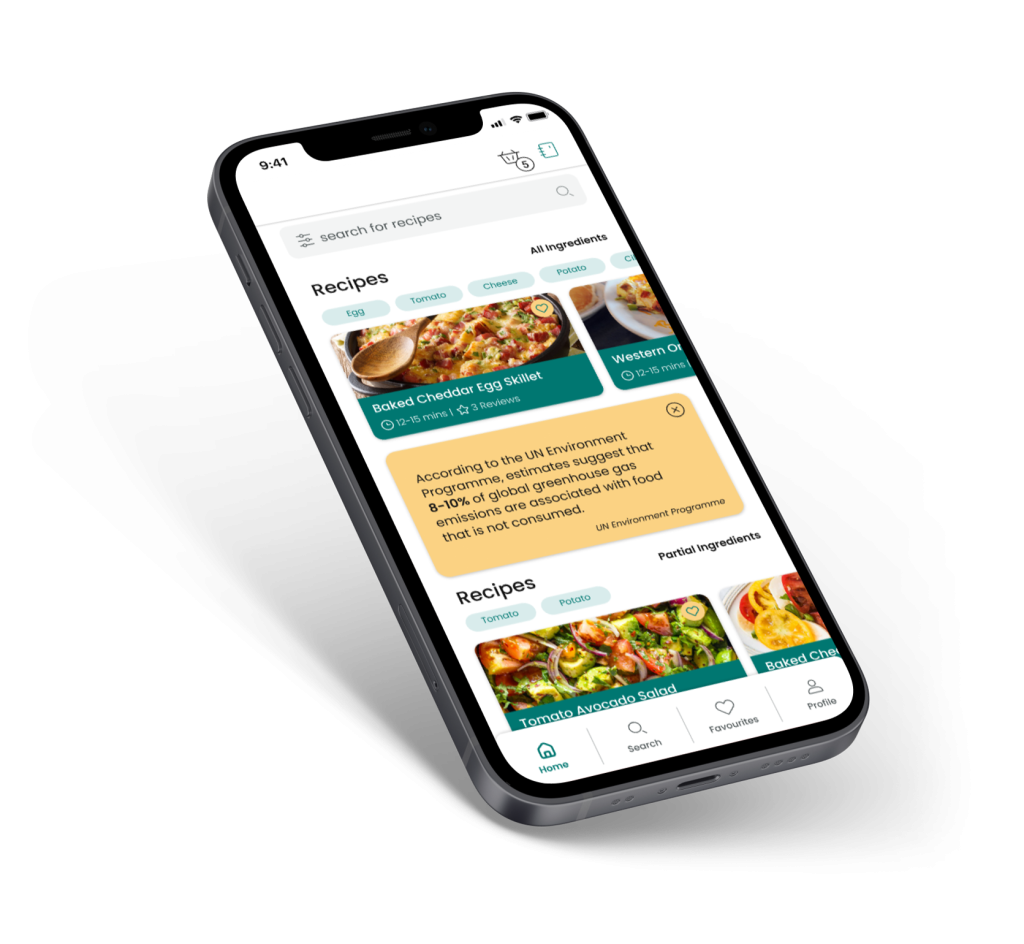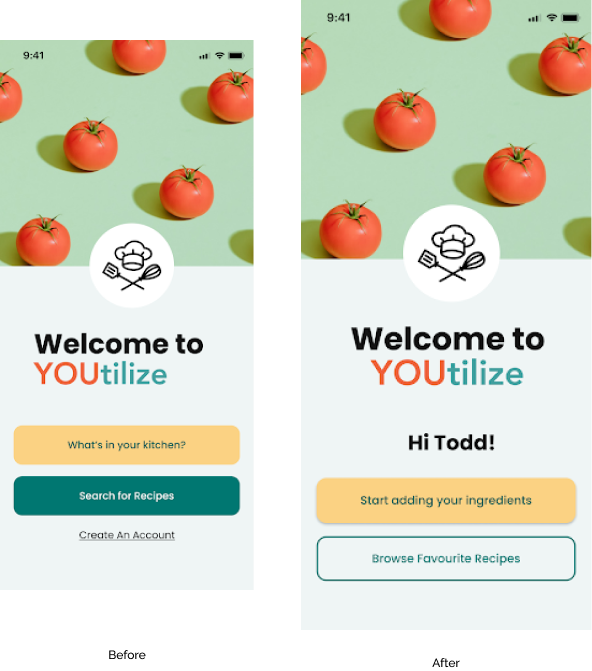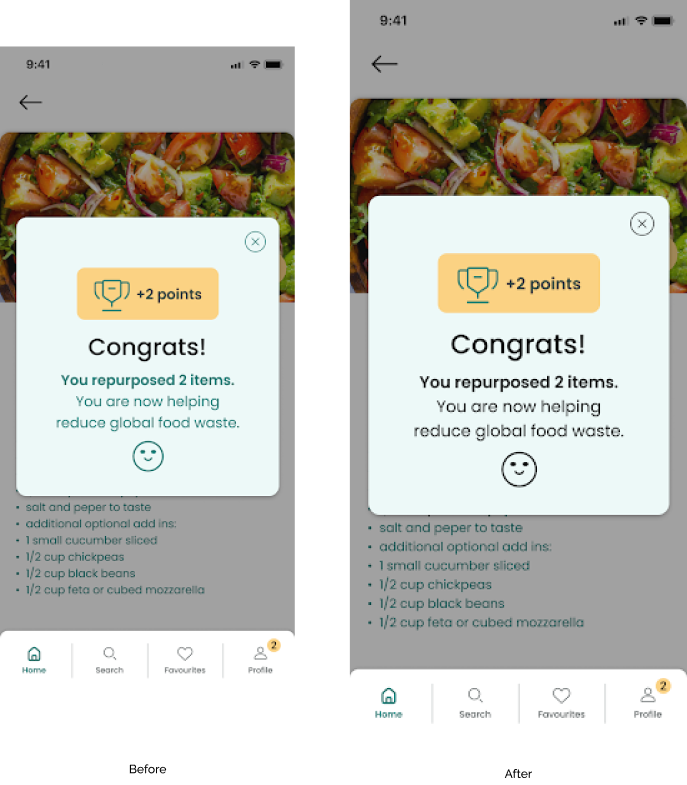Youtilize
An app that generates recipes using leftover ingredients in order to reduce food waste for eco-conscious cooks. Helping millennials become more aware of their food wastage habits.
Get in Touch!

An app that generates recipes using leftover ingredients in order to reduce food waste for eco-conscious cooks. Helping millennials become more aware of their food wastage habits.
The design sprint uses design thinking to solve complex problems in a short period of time through team creation, rapid prototyping and qualitative testing with targeted users.
Make a map and choose a target
Competing solutions
Choose the best option
Build a realistic prototype
Test with target customers
Due to the complexity and global social and economic factors that affect food waste. We conducted secondary research on the current and past context of this issue, the current solutions, and the key market players affected by this problem space.
Developed countries and developing countries have different reasons and context for their food waste. We first narrowed our problem space to food waste in developed countries by considering who was accessible to us and the experience we can draw from.
Current solutions already addressed food waste produced from businesses and grocery. Food thrown out from consumer standards were addressed with Naturally Imperfect and apps exist to minimize food waste from restaurants.
Based on our research we generated several goals including:
We each interviewed a millennial living in different household numbers and gathered information focusing on their behaviour in purchasing, storing, using, and disposing of their food. Identifying their main cause of food waste will direct us to the main function of our solution. Mostly produce gets thrown out because they get spoiled before it can be consumed along with old leftovers.
Before we sketched out possible solutions, we gathered inspiration from existing apps - highlighting components and features we liked.
The team voted on our favourite ideas and critiqued what works and what can be improved. From the sketching phase, we decided on our favourite idea, features, and components.
Many existing apps in our search allowed users to track and record grocery items. To tackle a new market we explored ways that addressed our user's motivation to find new recipes to try. Cooking can be a motivator for users to not only be reminded of expiring items but to utilize them before they go bad. The most common items that were thrown away were fruits and vegetables. We can reduce food waste as well as generate interest for cooks looking to explore new recipes by allowing users to search for recipes using specific ingredients.
User flow

Many existing apps already allowed users to track their purchased food and record expiry dates. Other recipe generators focused on cooking rather than food waste. We created a point system to gamify and motivate users to use the app.
Autofill can help users input ingredients quickly. The prototype displays how users can add, and delete ingredients to search for the right recipes they are looking for. The basket in the top right indicates the number of ingredients in the basket to quickly help users get a glance at the number of leftover ingredients they are saving. A clear all allow users to efficiently delete ingredients rather than delete them one at a time.
The recipe book indicates when the user is searching for recipes. The added ingredients are displayed as pills. Results show recipes that use all the ingredients added as well as partial ingredients to showcase variety and flexibility for the users to browse more options. Food waste info and tips are incorporated between the recipe results to educate and bring awareness.
Many existing apps already allowed users to track their purchased food and record expiry dates. Other recipe generators focused on cooking rather than food waste. We created a point system to gamify and motivate users to use the app.
We directed users to walk through our flow but initially, they were confused by the onboarding button options. The buttons appeared to have the same weight giving the appearance that they are equally important. We adjusted the wording and the style to focus on adding the ingredients as the initial step when using this app.


To further consider the usability for everyone, we checked each screen and adjusted the colours, size and contrast to meet WCAG's AA standard.
Through this design sprint, I learned how to quickly make design decisions. It can be easy to get caught up in the research and details but it doesn't mean we can stop iterating. The point system was last-minute incorporation but I think it made our app stand out and made it engaging for the user experience. A family and friends feature can be built out to further enhance the friendly competition bringing positive fun to a sad topic.